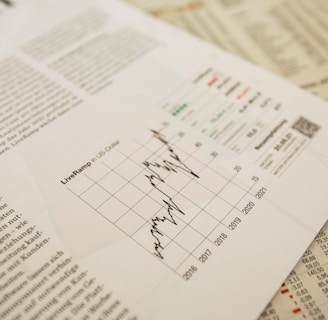US-China Trade War: A High-Stakes Showdown
The US-China trade war is a high-stakes gamble with no clear winner. It’s jacking up prices, shaking alliances, and threatening global growth. Whether it’s tariffs, tech bans, or soybean snubs, both sides are playing hardball.
ECONOMYTRADE WAR
4/16/20254 min read


The US-China trade war is back, and it’s bigger, badder, and more dramatic than ever. Picture two economic titans slugging it out in a global ring, with tariffs as their punches and the world economy as the shaky ropes. Since 2018, this feud has been a rollercoaster of tit-for-tat tariffs, heated rhetoric, and strategic maneuvering. Let’s dive into what’s going on, why it matters, and who’s feeling the heat.
The Spark That Lit the Fire
It all kicked off in January 2018 when then-President Donald Trump, waving the flag of “America First,” slapped tariffs on Chinese goods. The goal? Force China to rethink what the US calls unfair trade practices—think intellectual property theft, forced tech transfers, and a massive trade deficit. The US claimed China’s policies were bleeding American jobs and innovation dry, with the trade deficit hitting $295 billion in 2024 alone. China, led by Xi Jinping, didn’t sit quietly. They fired back with their own tariffs, accusing the US of protectionist bullying.
Fast forward to 2025, and the gloves are off. Trump’s back in the White House, and he’s cranked tariffs on Chinese imports to a jaw-dropping 145%. China’s retaliated with 125% duties on US goods, targeting everything from beef to soybeans. It’s not just tariffs—China’s playing sneaky with nontariff barriers, like blocking US agricultural exports over “pest” claims. The US, meanwhile, is tightening the screws on tech, eyeing restrictions on advanced microchips. This isn’t a polite trade spat; it’s a full-on economic cage match.
Why It’s a Big Deal
The US and China aren’t just any economies—they account for 43% of global GDP. When they sneeze, the world catches a cold. Here’s why this matters:
Consumers Get Punched: Tariffs mean higher prices. US shoppers are already paying more for gadgets, clothes, and even toys. In China, American beef and pork are pricier, hitting middle-class wallets. Research shows US importers bear most tariff costs, passing them to you and me.
Global Ripple Effect: Supply chains are tangled webs, and this war’s snarling them up. Countries like Japan, South Korea, and the EU are bracing for fallout, with fears of cheap Chinese goods flooding their markets. The IMF warns global growth could tank if this escalates further.
Geopolitical Chess: This isn’t just about trade. China’s cozying up to the EU, Japan, and Southeast Asia, potentially weakening US alliances. Meanwhile, the US is pushing for self-reliance, aiming to cut dependence on Chinese chips and rare earths. It’s a power struggle with Taiwan, fentanyl, and AI in the background.
Who’s Got the Upper Hand?
Both sides are flexing, but who’s tougher? China’s got tricks up its sleeve:
Diversified Trade: Since 2018, China’s slashed reliance on the US, dropping US exports from 19.2% of its total in 2018 to 14.7% in 2024. They’re leaning on Belt-and-Road countries and Brazil for soybeans.
Nontariff Warfare: Beijing’s mastered the art of sneaky blocks, like halting US beef or LNG imports with bureaucratic excuses. These hit hard, especially in Trump-friendly red states like Iowa.
“Eat Bitterness” Mindset: Chinese leaders are banking on their people’s resilience, framing the trade war as an existential fight. Xi’s not budging, seeing concessions as a blow to his global rep.
But the US isn’t down for the count:
Market Power: The US is China’s biggest customer. Losing access to American consumers could sting China’s export-driven economy, especially with its GDP growth wobbling at 4%.
Allies (Maybe): Trump’s trying to rally a coalition to block China’s tariff-dodging transshipping through countries like Vietnam. If he pulls it off, China’s workaround gets tougher.
Tech Edge: The US is squeezing China’s access to advanced chips, a choke point for Beijing’s AI and military ambitions.
The Catch: No One’s Winning
Here’s the kicker—trade wars are like arm-wrestling with dynamite. Both sides get burned. The US faces higher prices and recession risks, with Goldman Sachs warning of economic fallout. China’s export machine is sputtering, and its GDP target’s in jeopardy. Globally, supply chains are creaking, and allies are stuck in the crossfire. Even a “truce” like the 2020 Phase One deal didn’t fix much—China missed purchase targets, and core issues like subsidies remain untouched.
What’s Next?
The next 90 days are critical. Trump’s betting China will blink and negotiate, but Xi’s digging in, refusing to call first. Communication’s at a standstill—Trump’s even canceled talks on Truth Social. China’s hinting at broader retaliation, like restricting rare earth exports vital for US clean energy. Meanwhile, the US is carving out exemptions for tech like smartphones, showing some wiggle room.
Could this de-escalate? Maybe, but both leaders are playing to their bases—Trump to his MAGA crowd, Xi to his nationalist supporters. A deal would need serious give-and-take, and neither seems in a giving mood. If Trump can’t rally allies to block China’s transshipping, his tariffs lose bite. If China’s economy slows further, Xi might have to bargain. For now, it’s a staring contest with global stakes.
The Bottom Line
The US-China trade war is a high-stakes gamble with no clear winner. It’s jacking up prices, shaking alliances, and threatening global growth. Whether it’s tariffs, tech bans, or soybean snubs, both sides are playing hardball. As consumers, we’re caught in the middle, paying more for less. Keep an eye on this—it’s not just economics; it’s the future of global power. Want to dig deeper? Check out sources like the Council on Foreign Relations or Bloomberg for the latest.
